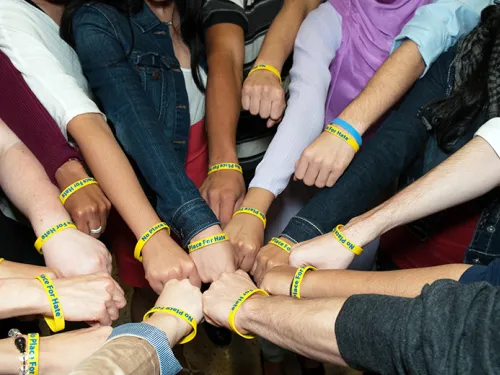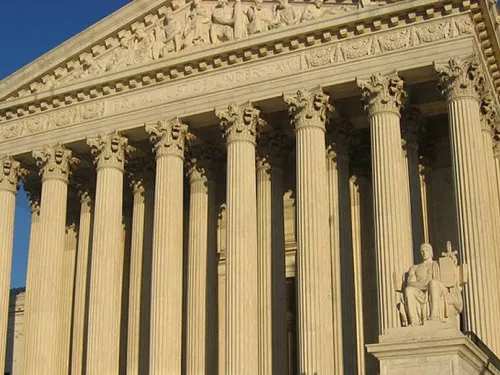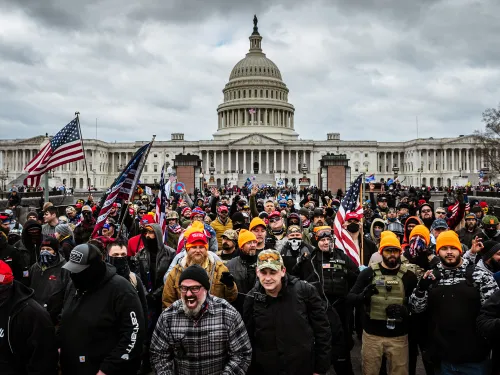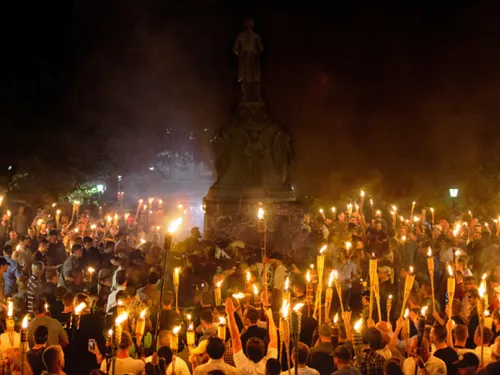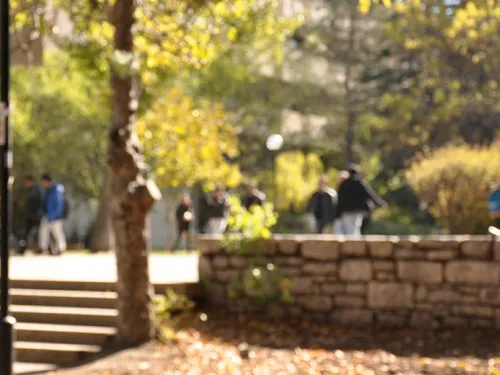Tallahassee, Florida, September 18, 2024 … Florida State University’s (FSU) Maura’s Voice Research Fund (MVRF) and ADL (Anti-Defamation League) are renewing their partnership established in 2023 to perform research into the extremist elements of misogynistic subculture, including potentially violent incels -- who continue their often-deadly attacks on women and girls in the US and around and the world. ADL-MVRF research and related publications will now be published and…
Search Results
149 Results

CW: This piece contains reference to rape and sexual assault In the wake of the October 7 terror attack in Israel, horrific details began to emerge of Hamas assailants brutalizing Israeli women and girls, parading their broken bodies through the streets, and concertgoers being raped and murdered in front of their friends. By November, videos and eyewitness testimony were widely available to the public, showing and describing Hamas terrorists using rape as a weapon of war. …

Teach students about this history of Barbie, reflect on their own experiences with Barbie and consider what identity groups may be missing from Barbie's collection.

Andrew Tate is a British-American former kickboxer and reality television star with millions of social media followers – 8.5 million on X (formerly Twitter) alone.
At issue in this case is a wedding photographer who seeks a religious exemption to Louisville's anti-discrimination ordinance for the purpose of denying wedding-related services to same-sex couples. ADL joined 14 other faith-based organizations in a brief led by Americans United for Separation of Church and State. The brief argues that the Free Exercise Clause of the First Amendment does not require granting the photographer a religious exemption to this neutral, generally…
New York, NY, June 27, 2022 ... ADL (the Anti-Defamation League) is deeply disturbed by today's Supreme Court decision undermining the separation of church and state enshrined in the Establishment Clause of the First Amendment.
“This is a significant change in how we approach prayer in public schools, and one that will have a negative impact in particular on students of marginalized faiths and non-religious students,” said Rachel Robbins, Chair of ADL’s Civil Rights…
This case involves a public high school football coach who filed a lawsuit claiming religious discrimination under the Free Exercise Clause and employment discrimination laws after he was fired for refusing to stop kneeling in prayer at the football field's 50-yard line immediately following every game. This practice started after the school district directed him to stop leading his team in pre- and post-game prayer, which the coach had done for eight years prior. The lower courts repeatedly…
At issue in this case is a free exercise challenge to a Maine secondary school tuition assistance program. To provide for high school education in over half of the State’s school districts that do not have public secondary schools, Maine pays for students to attend public or private schools which provide secular education, including religiously affiliated schools that do not indoctrinate religion. The lawsuit was brought by parents seeking to send their children to religious schools. ADL…
At issue in this case is the application of the First Amendment’s ministerial employee exception to an art teacher at a religious elementary school. Grounded in constitutionally mandated separation of church and state, the exception exempts religious institutions from all employment discrimination laws for employees deemed to be ministerial. A lower state court ruled that the teacher, who performed no “vital religious duties,” could move forward with her pregnancy and marital…
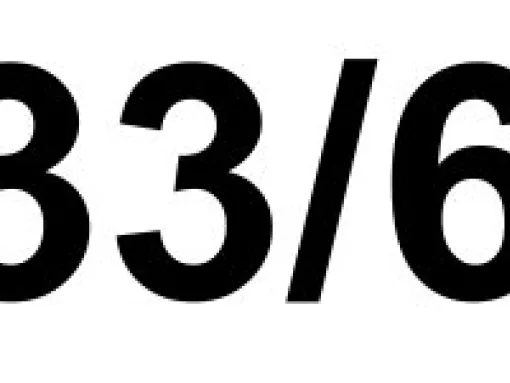
The number 33 is used by Ku Klux Klan adherents to signify the Ku Klux Klan. Since the 11th letter of the alphabet is K, three Ks signify "KKK" or the Ku Klux Klan. When using this reference, Klan members will frequently add the number 6 at the end, as in 33/6, because they think the Klan is currently in its sixth historical "era." Less commonly, some holdouts may still use the numeric code 33/5. Additional Images:

AKIA is Ku Klux Klan shorthand for "A Klansman I Am." It is related to another Klan acronym, AYAK ("Are You A Klansman?"). These are among the many acronyms developed by the Second Ku Klux Klan that emerged in 1915. Although the Second Ku Klux Klan did not survive, much of its terminology and many of its rituals did, and later Klan groups freely used them. Additional Images:

AYAK is Ku Klux Klan shorthand for "Are You A Klansman?" It is related to another Klan acronym, AKIA ("A Klansman I Am"). These are among the many acronyms developed by the Second Ku Klux Klan that emerged in 1915. Although the Second Ku Klux Klan did not survive, much of its terminology and many of its rituals did, and later Klan groups have freely used them. Additional Images:

ALTERNATE NAMES: Ku Klux Klan, MIOAKGroup Status: Active (in that there are many active Ku Klux Klan groups)
For the past century, the primary symbol related to Ku Klux Klan groups (other than Klan robes themselves) is what Klan members may call the MIOAK (an acronym for "Mystic Insignia of a Klansman"). It is more commonly referred to as the "Blood Drop" Cross. It appears as a square white cross in black outline against a circular red background. In the middle of the cross is what appears…
ALTERNATE NAMES: Ku Klux Klan, MIOAK
Read more about Blood Drop Cross
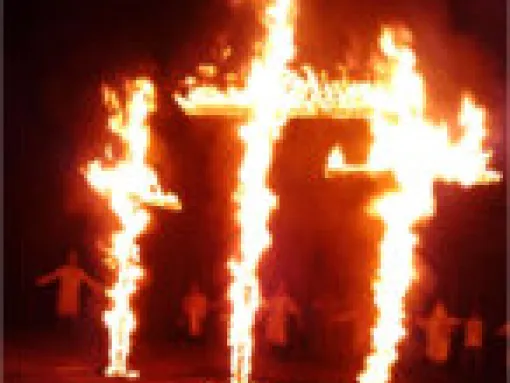
The image of the burning cross is one of the most potent hate symbols in the United States, popularized as a terror image by the Ku Klux Klan since the early 1900s. Cross-burnings (called "cross-lightings" by Ku Klux Klan groups, to make it seem as if they are not destroying a Christian cross) have long been used as a traditional symbol by Klan groups, used both in Klan rituals as well as in attempts to intimidate and terrorize victims of Klan groups. So widely associated with racial…

ALTERNATE NAMES: For God, Race and NationFGRN is a Ku Klux Klan acronym for "For God, Race and Nation," a common Klan slogan. It is one of a number of slogans, codes and rituals created by the Second Ku Klux Klan in the early 20th century. That Klan did not survive, but many of its codes and rituals were adopted by later Klan groups. In acronym form, the slogan is used primarily as a Klan identifier, typically appended at the end of on-line messages and postings. Additional Images:
ALTERNATE NAMES: For God, Race and Nation
Read more about FGRN
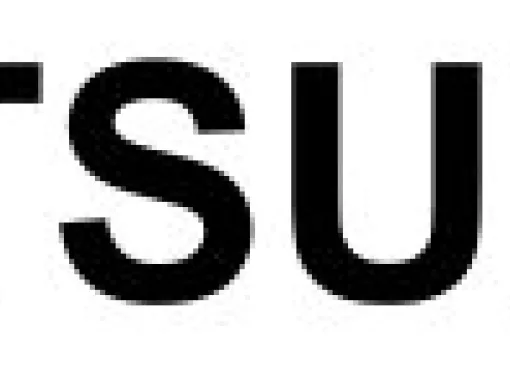
ITSUB is a Ku Klux Klan acronym for "In The Sacred Unfailing Being," a reference to God. It is one of many Klan acronyms created by the Second Ku Klux Klan that emerged in 1915. That Klan did not survive, but subsequent Ku Klux Klan groups continued many of its rituals and codes. Today, ITSUB has no real meaning or particular purpose and is typically used by Klan group members in on-line messages or posts solely as a way to identify themselves with the Ku Klux Klan. This has been the fate of a…

KABARK is a Ku Klux Klan acronym for "Konstantly Applied By All Regular Klansmen." It is one of many acronyms and codes developed by the Second Ku Klux Klan in the early 20th century. The Second Ku Klux Klan did not survive, but later Klan groups continued many of its codes and rituals. Today, KABARK is essentially meaningless and only used as a "sign off" in on-line messages by Klan group members, along with several other similar archaic acronyms. Additional Images:

KIGY is Ku Klux Klan shorthand for "Klansman I Greet You." It is one of many acronyms developed by the Second Ku Klux Klan that emerged in 1915. Although the Second Ku Klux Klan did not survive, much of its terminology and many of its rituals did, and later Klan groups freely used them. Additional Images:
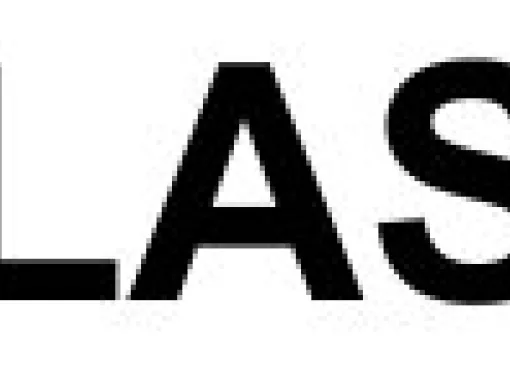
KLASP is a Ku Klux Klan acronym for "Klannish Loyalty, A Sacred Principle." It is one of many Klan acronyms created by the Second Ku Klux Klan that emerged in 1915. That Klan did not survive, but subsequent Ku Klux Klan groups continued many of its rituals and codes. Today, KLASP has no real meaning or particular purpose and is typically used by Klan group members in on-line messages or posts solely as a way to identify themselves with the Ku Klux Klan. This has been the fate of a number of…

From its beginnings in the 1860s, the Ku Klux Klan has employed a variety of salutes and hand signs both public and private. Most of the hand signs and gestures used by the first and second Ku Klux Klans have fallen by the wayside over the years, except for the Klan salute, which dates back to 1915. It resembles a Nazi salute (which some Klan members will also use), except that it is performed with the left arm. Often Klan members will separate the fingers of their hand when making the salute …
